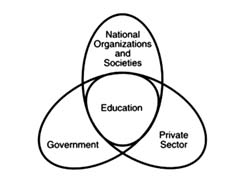Parenting(Age 5 to 8) | Academic | General | Parenting(Age 9 to 12) | Parenting(Age 13 to 16) | Mar 19, 2021
Overview of Science Education Program Standards

The Science Education Program Standards are the quality as well as the conditions of the school science programs. With these standards, the focus is on the issues around them through which the students can learn science and the teachers get the opportunity to teach science.
Different levels of criteria are being used to judge the students’ standards about the understanding of science. The first three are used to judge the quality of science programs for K12 students. These standards generally include individuals as well as groups for the development, design, selection and adaptation of science programs. The people involved in these standards are school teachers, department chairs, administrators, curriculum directors, school committees, and publishers. Each school in the district is required to translate the standards of science into programs with the right content, teaching, assessment standards along with the context and policies that reflect the local district. The content standards describe what the students should know and what the school should teach. Standards A, B, and C focus on the criteria that the schools and districts need to follow to design the program, courses for study, and curriculum while standards D, E, and F state the necessary conditions that should be followed to give equal opportunities for all the students and schools and comprehensively be implemented in the designing of program.
Standards Of Science Education Program:
The standards of science education programs are the thoughtful designing and implementation of the science programs at both district and school levels. It is meant to give a comprehensive experience for all the students without any disparity. The coordinated learning and experience through the programs help the students with more effective learning of the subject.
There must be a balance, so that the program does not become an obstacle for the students. The district and school policies must take important decisions, and provide guidance as well as support to the teachers and students for enhancing the science program.
If the rules become too restrictive, it stops the teachers from being creative in the class and use their ability to teach students.
Here are the different standards of science programs and what they hold:
- Program Standard A: In this standard, all the programs of K 12 need to be equal to that of National Science Education Standards and designed for each grade especially to match the goals of the programs.
It also states that a set of clear goals and expectations should be laid out for the students to guide them in designing, implementing, and assessing all the elements of the science program. The selection of curriculum framework should be used to guide the students and help them in the development of units and courses of study.
- Program Standard B: In this standard, it is laid out that the programs of study should with aligned with the development, interest, and has relevance to the students’ lives. It should emphasize the understanding of students through injuries and is connected to the other subjects in school.
The program should match all the content standards. There should be district-wise curriculum goals and expectations to ensure the articulation along with all the grades. The program must include the understanding of science in students with the inquiry.
- Program Standard C: Mathematics is an important subject that goes hand in hand with science. This standard focuses on the importance of science and mathematics simultaneously. The science program should be coordinated with the mathematics program to enhance and improve the knowledge of mathematics among students. Science requires mathematics for the important part of its content like the collection and treatment of data. The collaboration of science and mathematics provides an opportunity for the students for advanced instruction in science.
- Program Standard D: This standard describes why the students of the K 12 standards should be given the right to relevant resources while studying the program. It says that all the K 12 students should be given access to the resources such as quality teachers, time, materials as well as the types of equipment, safe and adequate space, and the community relevant to the program.
To conduct the scientific inquiry, students need to get the right and relevant resources to investigate the phenomena directly or indirectly related to the program.
- Program Standard E: The students of K 12 should be given equitable access to opportunities so that they can achieve the National Science Education Standards irrespective of the disabilities, aspirations, sex, ethnicity, cultural background, or interests.
- Program Standard F: Schools should work as a committee that encourages the students and supports them to understand and implement the science programs. They should also sustain the teaching for an effective science program. The schools should continuously make reforms for the sake of students to understand and teachers to add their ability to the science program.















Post a Comment: